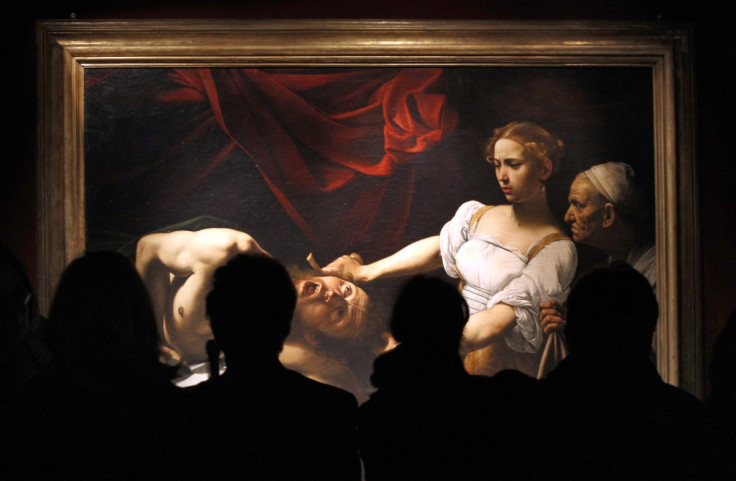Lost $140m Caravaggio masterpiece found in French attic after 150 years

A long lost painting by Italian master Caravaggio worth up to €120m (£95m, $137m) has been found in a French attic, experts contend. The canvas was unveiled at a press conference in Paris on 12 April two years after the owners of a house in the outskirts of Toulouse stumbled upon it as they checked a leaking roof.
Parisian art expert Eric Turquin, who retrieved the painting, said it was in exceptional state of conservation, despite it is believed to have remained hidden in the property's attic for about 150 years. The work is said to be Judith Beheading Holofernes, a biblical scene painted by Caravaggio, whose real name was Michelangelo Merisi, in Rome at the beginning of the 17th century.
The artist originally painted two versions of the work that shows biblical heroine Judith decapitating an Assyrian general. One is currently on display at the National Gallery of Ancient Art in Rome. The other was lost about 100 years after it came to being. Turquin seems convinced it has now finally been found, although he said there "will never be a consensus" on the attribution.
Two of three experts he consulted said identified the author as Louis Finson a Flemish painter and art dealer who owned some of the Italian master works but also realised copies of others. "But the third expert I met told me that it was not only a Caravaggio, but also a masterpiece," Turquin said.
"Judith Beheading Holofernes must be considered the most important painting, by far, to have emerged in the last 20 years by one of the great masters." French authorities gave some credit to the claim declaring the painting a "National Treasure" and banning it from being moved abroad.
Turquin estimated its value at €120m and claimed he has been sleeping with it in his bedroom, as a security measure ever since it was shipped to Paris.
© Copyright IBTimes 2024. All rights reserved.






